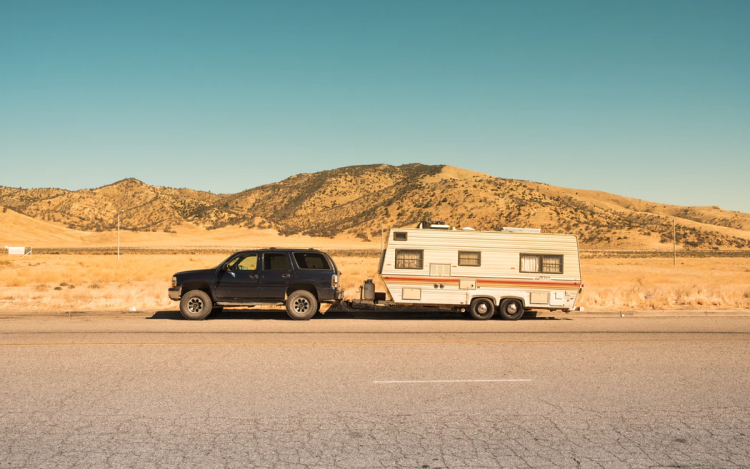There is nothing more quintessentially American than the road trip. The nation that pioneered assembly line manufacturing of motor vehicles set the tone in the early 1900s for loading up the family group and hitting the highways. Scenic byways like Route 66, Highway 1, the Blue Ridge Parkway, and the A1A created memories for thousands of American families. With the country recently recovering from the COVID pandemic, the RV road trip has seen a huge surge in popularity for an entirely new generation of customers.
Choosing a Setup
Like the marine industry, the RV industry runs the gamut from high quality and well-built to aesthetically pleasing but poorly constructed. When a prospective shopper hits the sales lot, there are certain considerations that should have been hashed out before arriving. First, you and your family need to decide how big a setup you will need. Feeling hemmed in on rainy days may not make your trip vision board, but it is a reality to be prepared for.
Once you’ve decided on the length of your setup, the next consideration is the method of locomotion. Traditional RVs come in two forms: a motorized coach with its own power train, or a towable steel chassis that hitches to your pickup truck via a ball hitch or a gooseneck hitch. The gooseneck hitch is more commonly referred to as a fifth-wheel attachment and is the same type utilized by commercial tractor-trailers. Each type of RV comes with its unique challenges, and an honest evaluation of the driving abilities of each adult in your party is essential to determine which will work best. An important decision-making factor should be your plan B: if your RV breaks down on the road, where will your family reside? Do you have enough savings to cover 2 weeks of hotel fees and repair costs to an internal engine? Or would your family feel more comfortable being able to detach the RV and use the tow vehicle for transportation at your destination? Talk these issues over with your traveling companions before you depart, because preparation is an important part of responding to breakdowns.
Consider relying on a professional that offers trailer repair services. It’s best to seek professional help so that you can avoid causing more serious problems as you try to restore your trailer. Make sure to hire a reputable expert that has plenty of experience.
Avoid Complications
Even the most well-constructed RVs need a shakedown to check for issues before long treks are attempted. There is no way to accurately simulate the experience of towing or driving a large rig until you do it. Many new RV owners will take short weekend excursions near their home until they get comfortable with all of the steps involved in hitching, leveling, and connecting their camper. And because even newly constructed RVs aren’t subject to the same building codes as passenger vehicles or mobile homes, ensuring the electrical, plumbing, and propane function as promised before you get too far from the lot is essential.
Making Preparations
Depending on the size of your family, you will need to take certain RV preparations into account. If you have a larger family, plan for six feet per person, the smallest rig you should consider is 30 feet and may feature multiple slide-outs. Are the slides hydraulic or manual, and if they are hydraulic, do they have a manual release in case of electrical issues? Depending on the family lifestyle, storage considerations can include underbed compartments, closet space, and kitchen setup. Many RVs feature convertible dinettes that double as extra sleeping space–how easily does this conversion occur? Now let’s enter the bathroom. Most new RVs opt for a walk-in shower setup. If you step into the shower, does the floor feel supported? Does the drain have a slight downward slant to prevent pooling if your campsite doesn’t have good drainage.
Ask your salesperson where the city water and power supplies are located. City water is the term RV owners use to describe the clean water hookup from the spigot at your campsite to the RV. Your water holding system should allow you to fill up to 30 gallons of drinkable water if you and your family choose to “boondock” or camp without hooking up. Ask about your tank’s capacity and get a quick lesson from the staff at the center on how to fill. An in-line water filter assures that you and your family will reduce contamination to your rig from externally attached water lines, and will help regulate the pressure through your plumbing in the camper. Most RVs do NOT use household-grade plumbing and require a significantly reduced amount of line pressure to avoid rupture or leaks. Purchasing a small pressure regulator is well worth the money and will ensure that you enjoy your RV for many years to come.
Get a quick lesson from the sales staff about how to ignite your propane pilot lights. Each time you camp, you will have to seal off the propane before you travel, or you run the risk of an explosion or fire. Learning how to connect your tanks to the RV, and where your external pilot ignition system is located (generally in the front of the RV near the spot where the refrigerator vents to the outside) is essential to make sure your climate control system works as promised. In addition, your propane oven will need to be lit once your camper is leveled and hooked up. Since most campers operate at either 30Amps or 50Amps of electrical connectivity, a gas oven rated for marine use is standard on an RV and ensures that if the power goes out you can still prepare meals. Some setups also feature an onboard generator, which will either be powered by gas from the powertrain of your motorhome or propane from your tanks. Get a lesson from the sales staff on how to properly run your generator before you take your purchase off the lot. You will be glad you did.
Keep Things Sanitary
Now for the elephant in the room: keeping your rig sanitary and safe to reside in. Dealing with wastewater and sewage is the number one reason why people fear going over the road in an RV. At home, high-efficiency toilets simply whisk things away to a large bore sewer pipe and the utility department cleans the water and returns it to circulation without a thought. You will spend nearly as much time thinking about your RV’s holding tanks as you will spend parking it, so it’s important to avoid the most common rookie pitfalls as you adjust your family’s habits.
Your camper toilet and sewer system will drain to a blackwater tank mounted on the chassis, which will require frequent dumping and flushing to prevent blockages and backups. Be sure to ask your salesperson about the types of connections you will need to purchase to attach your flexible sewer lines. Most models use a bayonet attachment if they were manufactured after 2010, but an RV parts desk will have conversion kits available. A simple search online will reveal a wealth of how-to videos regarding how to connect and flush your black tanks. These tanks will also require the regular addition of chemicals to mitigate odor and help with waste breakdown. Always use the recommended brand of chemical for your toilet, and before each flush, fill the bowl completely with water before opening the flue. This will prevent a pileup and keep your tank functioning properly.
Your shower and kitchen drains go into a greywater holding system. In general, your black tank holds double the length of your RV in gallons, and your grey tank will hold the length of your RV in gallons. During the tank flushing process, the best method (and the most sanitary) is to first open the black tank and drain, then open the separate valve to the grey tank to clean your lines. Flush the tanks with fresh water and close the valves before disconnecting the flex hose. Reapply the sewer pipe cap and thoroughly wash your hands. It is recommended that you consider investing in a box of nitrile gloves that live in the storage compartment where you keep your black hoses, as well as to have your city water setup and black setup kept in separated plastic storage bins to prevent cross-contamination.
So, in conclusion, the key to a fantastic and memorable experience in your new RV boils down to four simple steps:
Prepare for everything you can think of.
Plan for things you can’t control
Place yourself in a setup you can comfortably drive and maneuver.
Pack light, you can always purchase what you are missing when you get there.
By using the tips above, you will be able to ensure that you and your family can minimize complications during your camping trips.




